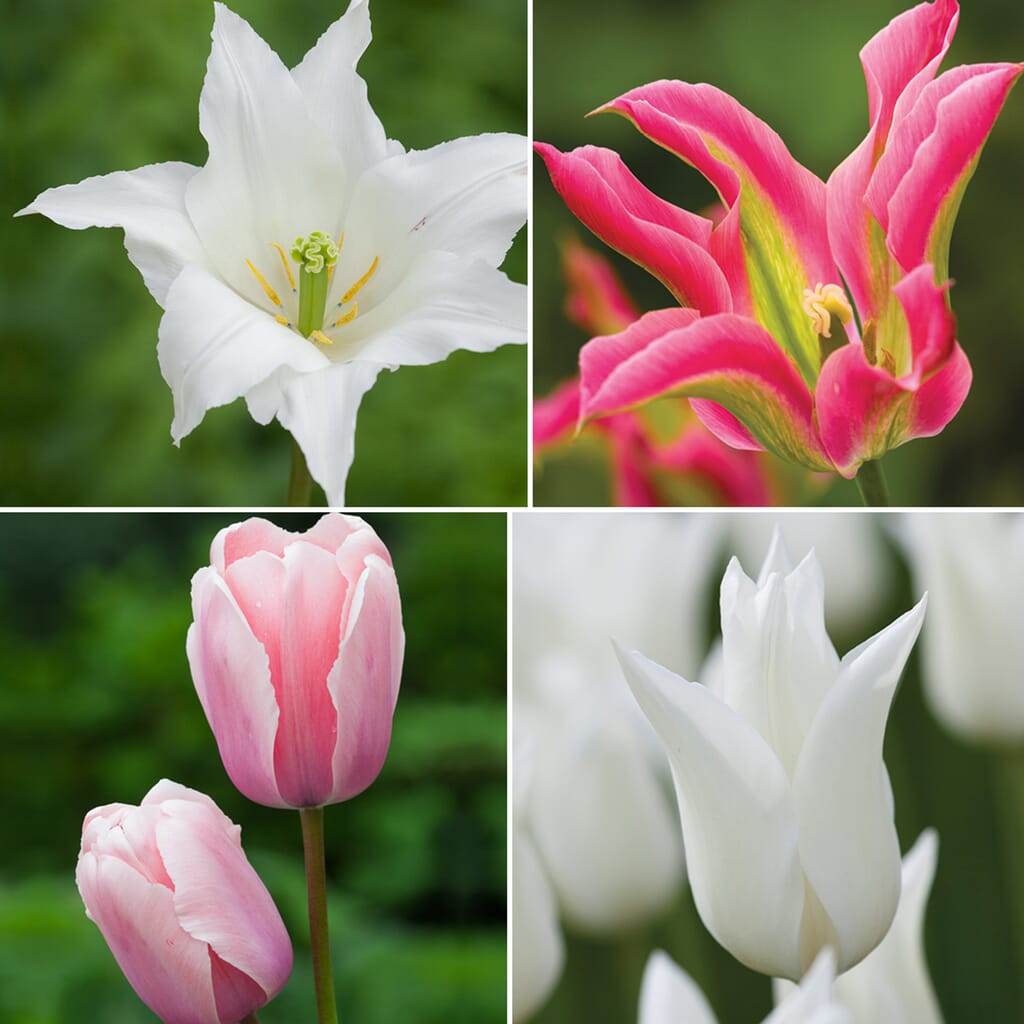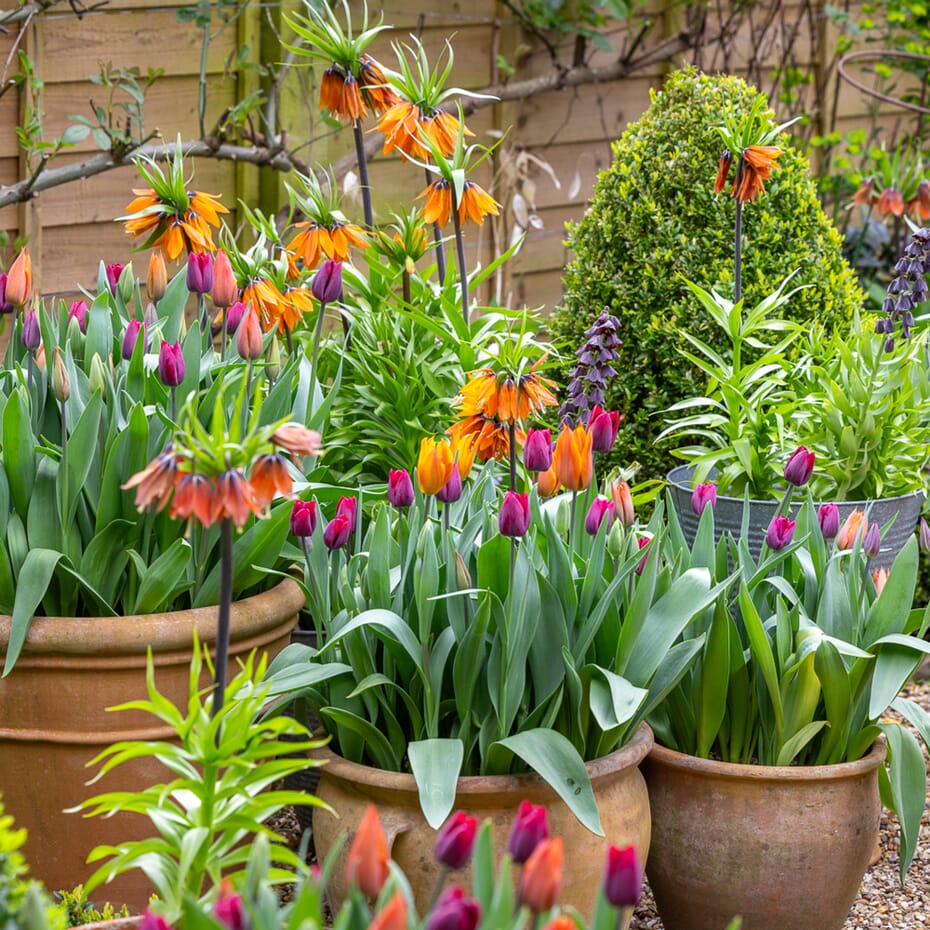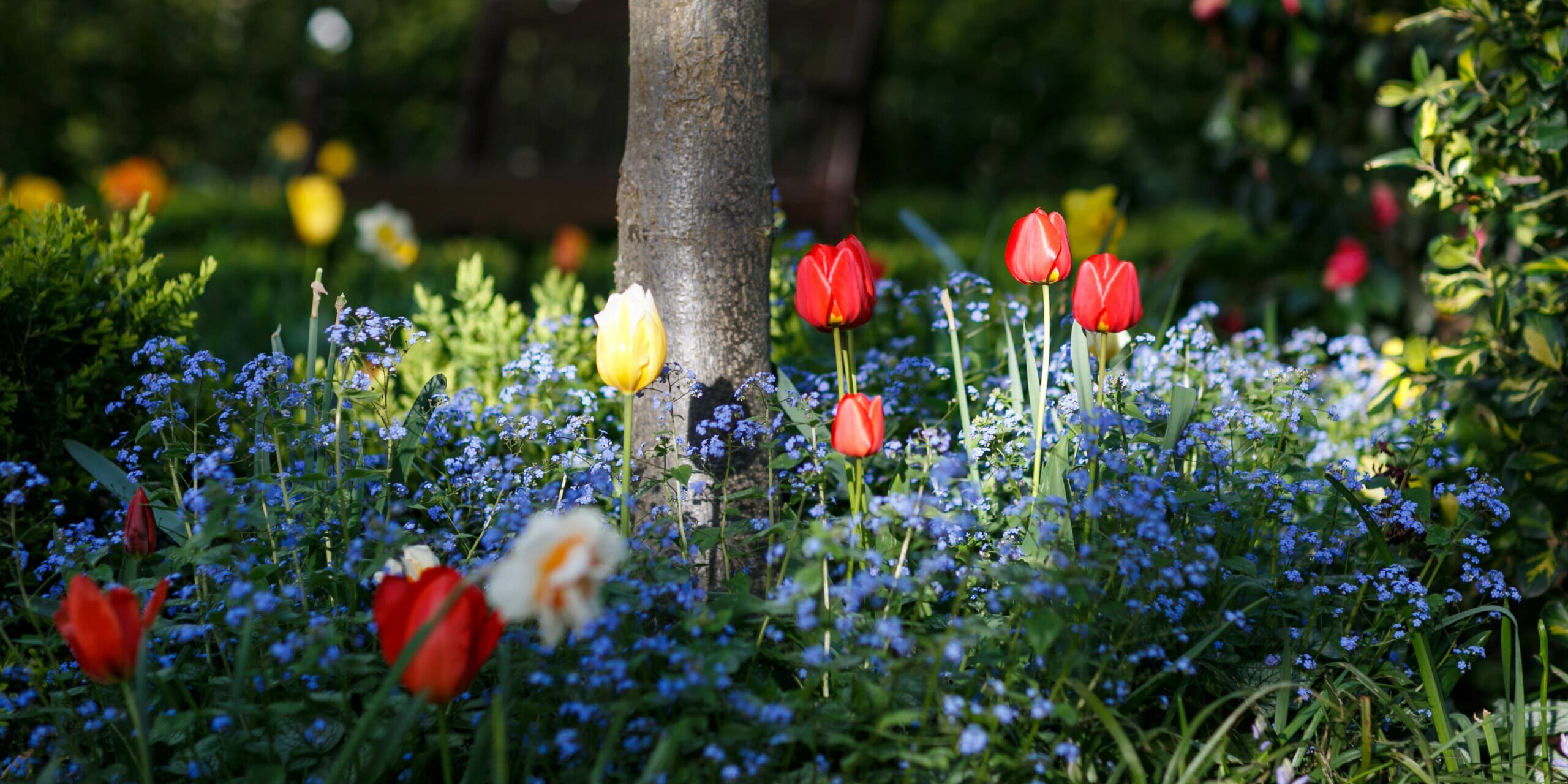
As autumn settles over the Cotswolds, the garden begins to slow – but for garden designers, this is when the new season truly begins. Now is the perfect time to plan and plant spring bulbs, setting the stage for those first joyful bursts of colour that transform your garden after winter.
Bulbs planted in autumn have the cool, damp months to establish roots beneath the soil, ready to burst into life as soon as temperatures rise. The reward is one of the most magical moments in the gardening year: tulips glowing in soft morning light, narcissus dancing on a breeze, the first snowdrops signalling a new beginning.
Spring bulbs work best when they’re part of the overall garden design, not an afterthought. We treat bulb planting as a creative process – considering colour palettes, heights, and how the display will look alongside permanent features such as paths, terraces and architectural planting.
As part of a garden design in the Cotswolds, bulbs look particularly striking against local stonework and soft landscaping. Pale tulips shimmer against honey limestone walls, while deeper tones add drama to contemporary steel or oak-framed spaces.
When creating the planting design of a new garden, we always include bulb planting in the initial design as this will influence how the space looks and feels across the year.
The secret to a beautiful spring display is succession. We choose bulbs by both variety and depth, and layer them to ensure the garden keeps changing from the beginning of the year right through to May. It’s a simple but effective way to bring colour and interest to your garden with minimum effort.

If you’re looking for flexible colour and easy maintenance, bulbs in pots are unbeatable. We love pairing artisan containers – such as handcrafted Torc Pots – with seasonal bulb planting.
Planting bulbs in pots is a great way to brighten terraces and entrances when borders are still dormant. Large terracotta or stone pots make a bold statement, while smaller grouped pots add charm and informality. Choose bulbs that complement the vessel – tulips for structure, narcissus for scent, violas or trailing ivy for softness.
Come summer, the same pots can be refreshed with herbs or annuals, keeping your garden dynamic and alive throughout the year.
Spring bulbs weave beautifully through perennial borders, adding bursts of life among shrubs and grasses. We use them in Cotswold gardens to:
Spring weather can be unpredictable, which makes it even more important to think about how your garden looks from inside. We often design bulb planting so it aligns with key views from the kitchen or dining room – places where you’ll see them every day.
For example, a well-placed drift of tulips or daffodils can transform a morning coffee into a moment of calm. These small design decisions connect indoors and out – the essence of good garden design.

There’s something especially uplifting about spring bulbs in a Cotswold garden. Their vivid colour contrasts beautifully with soft stone and open countryside, marking the change of seasons in a way that feels timeless.
Our planting plans are carefully balanced – bulbs chosen not just for their flower, but for the structure they leave behind. Even after flowering, the seedheads catch dew and low light, giving subtle texture and movement well into summer.
Now truly is the best time to start planning. With a little care this autumn, your spring garden will feel designed, not accidental – and the hard work you put in now will be well worth the effort.
Now is the ideal time to start making plans for your spring garden. At Gardens by Keltie & Clark, we’ll take the time to work with you so we fully understand what it is you want to achieve from your new garden design. Contact us and let’s get your garden ready for spring.


